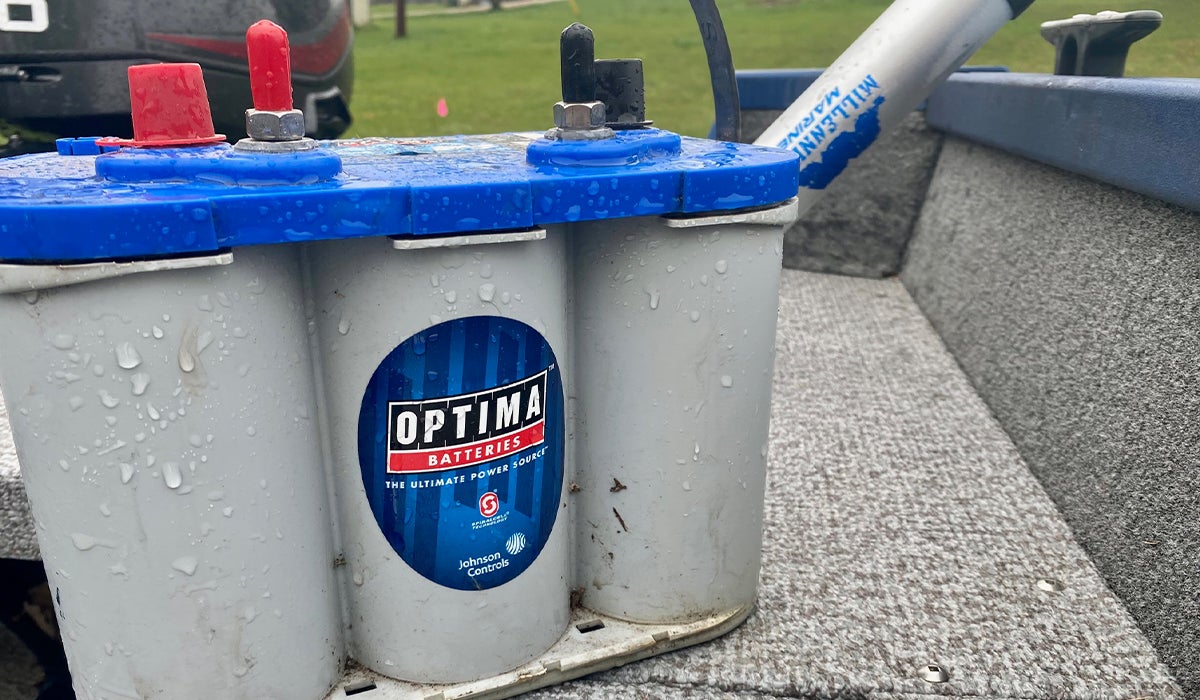
Our Editors independently research, test, and rate what we feel are the best products. We use affiliate links and may receive a small commission on purchases.
We love our boats, and many of us have some kind of marine battery in our boats to run the engine and/or to operate the various electronics like fish finders, navigation and electric trolling motors. A marine battery is specifically designed to start a boat engine or power a trolling motor and appliances onboard. We’ve reviewed the best marine batteries and have put together a guide explaining the different types – starting and deep cycle batteries, as well as dual purpose ones.
Please note that while some people use marine batteries in their recreational vehicles, we’d recommend RV deep cycle batteries for that. Never use anything but a marine-rated battery, as it can lead to damage or expense that you don’t need.
Cover Image by Derrek Sigler
Quick Answer: The Best Rated Marine Batteries
- VMAXTANKS AGM Marine Deep Cycle Battery
- Universal Power Group Sealed Lead Acid Battery
- Odyssey 31-PC2150S Marine Starting Battery
- Optima Batteries BlueTop Marine Starting Battery
- Optima Batteries YellowTop Dual Purpose Battery
- Odyssey Thunder Marine Dual Purpose Battery
Best Deep Cycle Marine Battery
#1 Editor’s Choice – VMAXTANKS AGM Marine Deep Cycle Battery
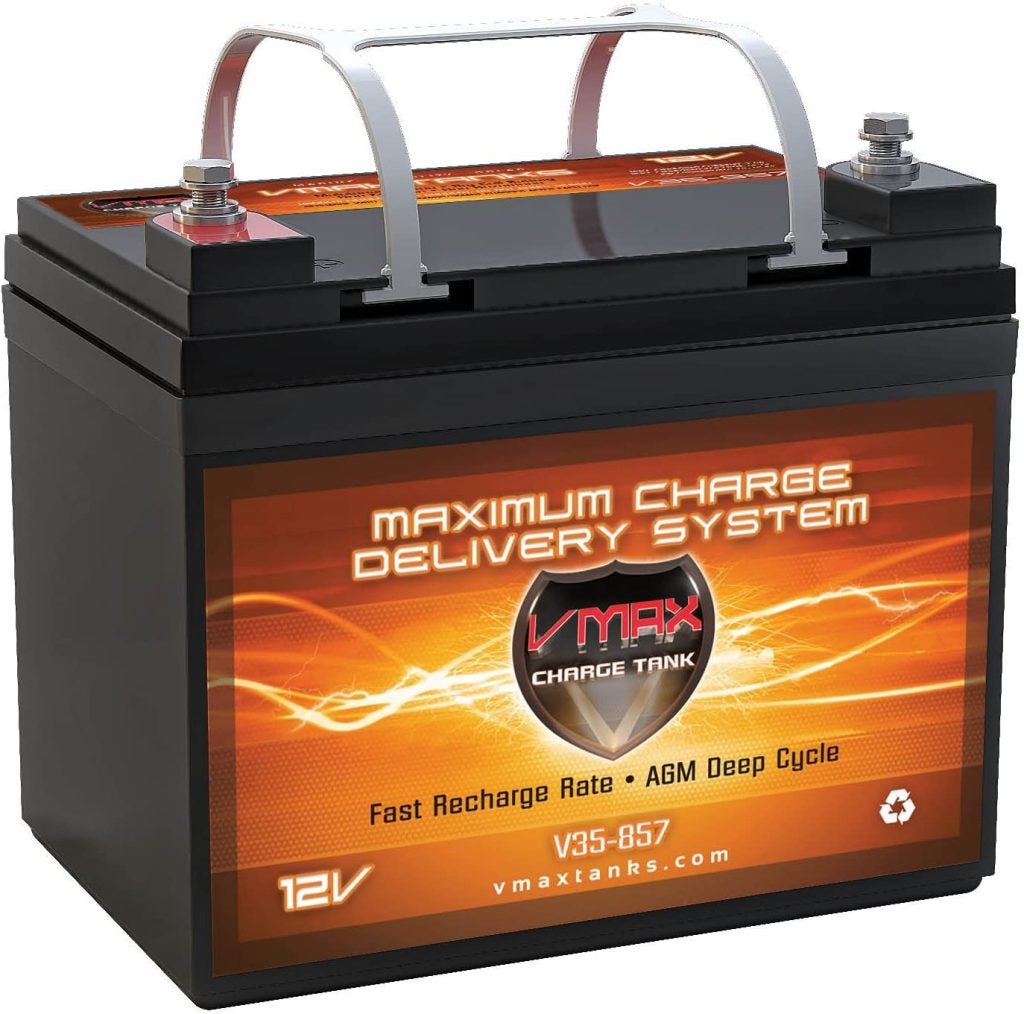
- Type: AGM / SLA (Absorbent Glass Mat, Sealed Lead Acid)
- Size & Weight: L 7.7″ x W 5″ x H 6.1″, 25 lbs
- Capacity: 35Ah
- CCA: 300A
- Charging Current & Voltage: 3-15A, 14.4-14.9V
- Expected lifespan: 5-8 years in float mode
The Vmaxtanks Vmax857 is a deep cycle marine battery with a capacity of 35Ah. With a high-quality construction using AGM technology, you get a long-lasting model that’s maintenance-free, spill-free and quick to charge. The manufacturer employs a unique physical and chemical structure for the battery plates with special treatment to deliver a strong performance and outstanding reliability. In cyclic use, the battery is able to reach full capacity with a regular depth of discharge of 60%, giving you a long service life. In float mode, you can expect a 5-8 year lifespan. Thanks to an integrated handle and its light weight, the battery is portable and also resistant to shocks and vibration. You can operate it in nearly any position.
For powering a 40lb/18lb trolling motor, you can expect 4 to 9 hours of runtime with 50-60% depth of discharge. Operational temperatures for the Vmax857 marine battery are -4°F to 140°F for usage and storage, and 14°F-140°F for charging. Any quality AGM smart charger can be used.
#2 Runner Up – Universal Power Group Sealed Lead Acid Battery
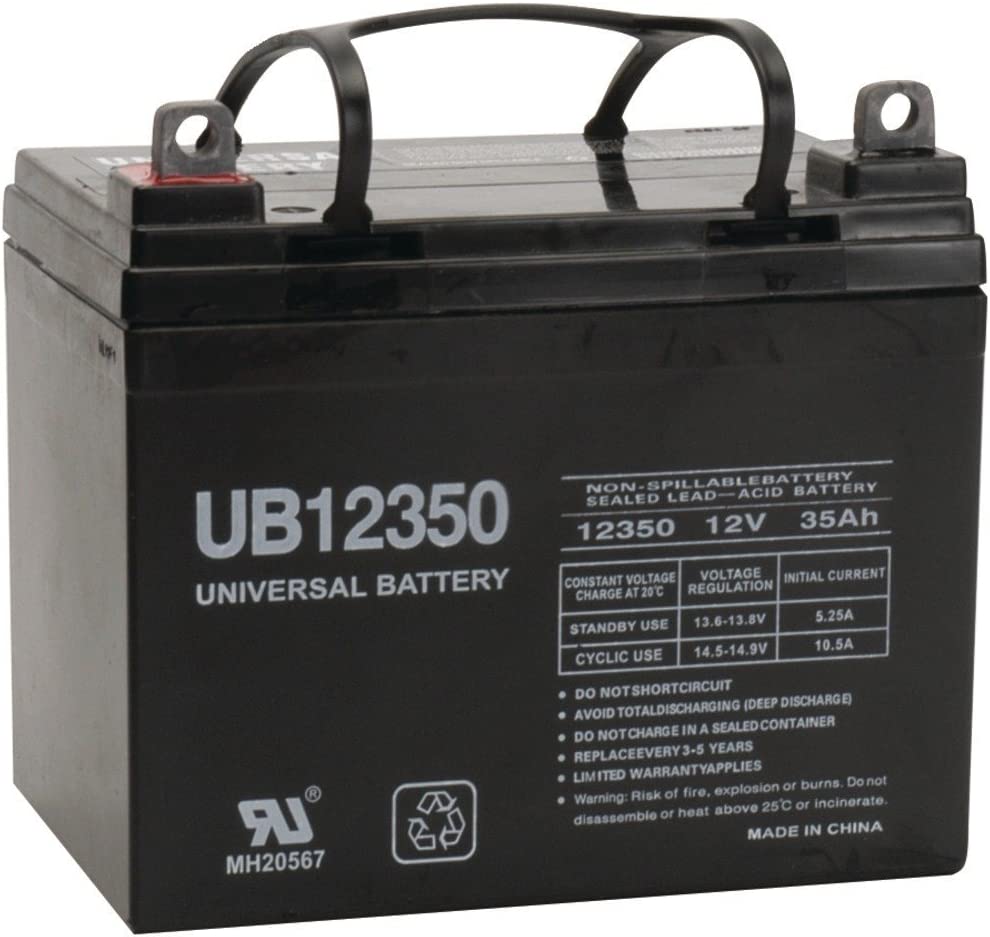
- Type: AGM / SLA (Absorbent Glass Mat, Sealed Lead Acid)
- Size & Weight: L 7.75″ x W 5.19″ x H 6.26″, 22.5 lbs
- Capacity: 35Ah (75Ah also available)
- CCA: 315A
- Charging Current & Voltage: max 10.5A, 14.6-14.8V
- Expected lifespan: 1,200+ cycles at 30% depth of discharge, 5 years in float mode
The Universal Power Group UB12350 deep cycle battery uses absorbent glass mat technology to provide a reliable yet affordable marine battery. This model has a capacity of 35Ah, but is also available with 75Ah. The acid electrolyte is trapped in a fiberglass mat, contained in a sealed and valve-regulated ABS case. The battery is therefore spill-proof, corrosion and maintenance free as well as being highly resistant to vibration. With less than 3% self-discharge in storage, the UB12350 marine battery retains approximately 64% charge after 12 months at 68°F.
Thicker plates, corrosion-resistant terminals and a smaller size and weight make this a versatile and reliable model for use with your personal watercraft. Portability is ensured thanks to the fixed handle. In float mode, you can expect a lifespan of 5 years. The battery is compatible with many chargers and charging modes. Operational temperature ranges are 32°F to 104°F for charging, 5°F to 113°F for use and 5°F to 104°F for storage. You can easily build a power bank for your boat by connecting several units. With a 1-year limited warranty, this is our pick for the best marine deep cycle battery.
#3 Best Starting Battery – Odyssey 31-PC2150S Marine Starting Battery
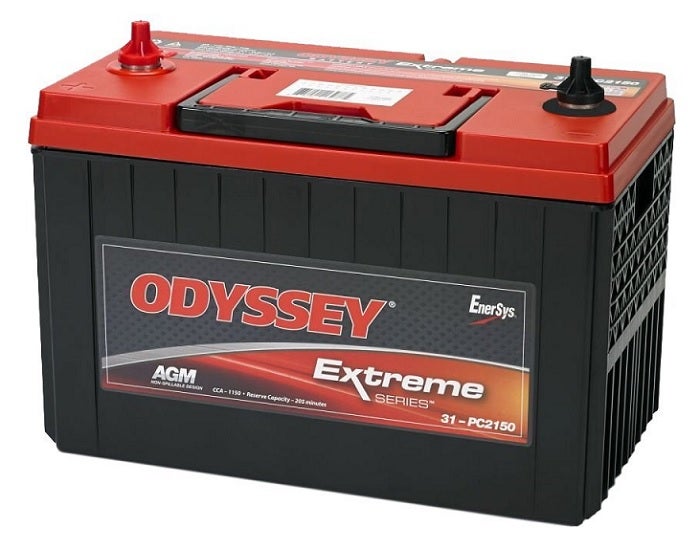
- Type: AGM / SLA (Absorbent Glass Mat, Sealed Lead Acid)
- Size & Weight: L 13″ x W 6.8″ x H 9.41″, 77.8 lbs
- Capacity: 100Ah
- CCA: 1150A
- Charging Current & Voltage: max 50A, 14.1-14.7V
- Expected lifespan: 8-12 years, full recovery up to 400 cycles at 80% depth of discharge, 70% longer cycle life compared to other models
The Odyssey 31-PC2150S is the best marine starting battery that can deliver a total of 1150 CCA, or even Pulse Hot Cranking Amps of 2150. You can rely on rapid recovery and extreme durability, paired with a long lifespan and service life, the perfect fit for heavy duty use on boats and watercrafts. Constant vibration, extreme loads, long idle periods and even harsh environments pose no problem for this Odyssey marine battery. The PCS2150S uses AGM technology in a rugged construction, packed tightly with pure lead plates. This enables the battery to recover fully even after 400 cycles of 80% depth of discharge. The manufacturer specifies a lifespan of 3 to 10 years, but experience by heavy power users proves the value to be closer to 8 to 12 years. The battery delivers stable voltage and takes 4 to 6 hours to fully recharge.
The sealed design prevents spills and allows you to use the battery in any position. The corrosion-resistant brass terminals are highly conductive thanks to plated tin. The container features a self-regulating valve for gas reabsorption and is highly flame retardant. The construction is superior to spiral-wound batteries of equal size with 15% more battery plate surface area for 40% more reserve capacity, a total of 205 minutes. The total capacity equals 100Ah. The Odyssey PC2150S battery does not lose its charged energy during cold storage temperatures. For off-season storage, ensure a voltage of 12.84V. The battery can’t freeze down to -40°F and can therefore be left in the vehicle, but it can be stored for 2 years or more below 77°F.
#4 Best Cranking Battery – Optima Batteries BlueTop Marine Starting Battery
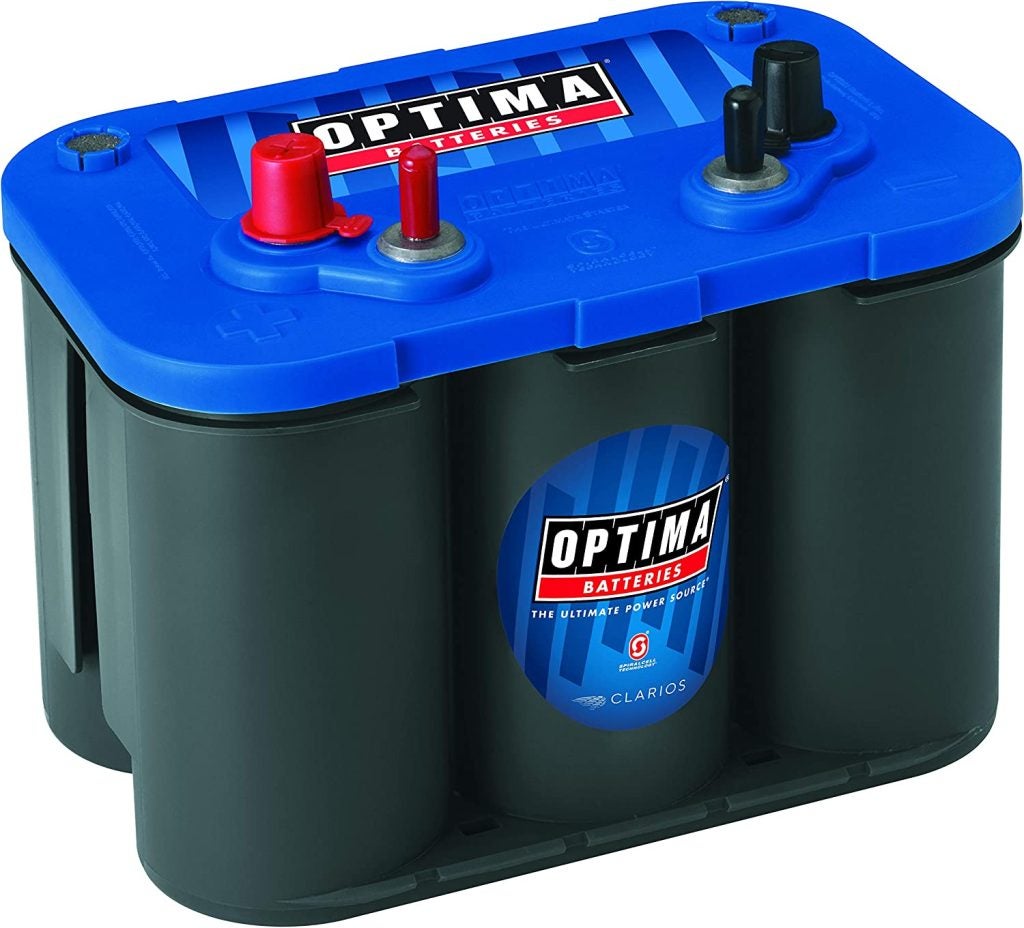
- Type: AGM / SLA (Absorbent Glass Mat, Sealed Lead Acid)
- Size & Weight: L 10″ x W 6.9″ x H 7.8″, 38.4 lbs
- Capacity: 50Ah
- CCA: 800A
- Charging Current & Voltage: 10A, 13.8-15V
- Expected lifespan: 6-8 years in float mode
The Optima 8006-006 34M marine battery is a designated starting battery with strong cranking, top performance and strong durability. It’s able to function in harsh conditions and delivers 800 CCA with a total capacity of 50Ah, while the reserve capacity is 100 minutes. Optimal starting even in bad weather and great resistance to vibration and shock make this a reliable model for your boat or watercraft. Optima batteries combine AGM technology with individual spiral-wound battery cells, which consist of two pure lead plates coated in lead oxide.
Thanks to a precision-controlled construction process, these models deliver up to three times more recharges than regular marine batteries. The design is spill-proof, maintenance free and can be mounted in any position. The compact dimensions and low weight make is a portable model in a rugged plastic casing. With a low internal resistance, the battery offers highly efficient power output and fast recharges. You can use most AGM smart chargers with this battery. The Optima BlueTop would be my second choice for the best marine cranking battery.
#5 Best Dual-Purpose Battery – Optima YellowTop Dual Purpose Marine Battery
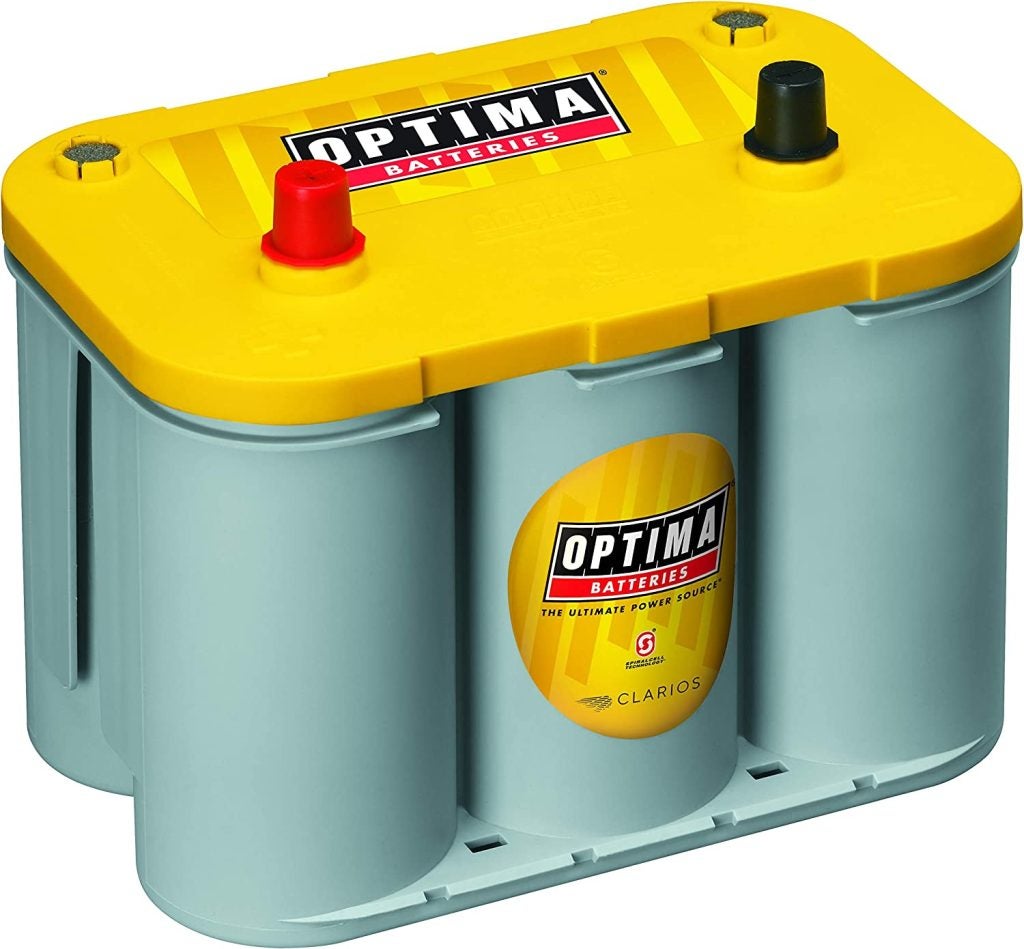
- Type: AGM / SLA (Absorbent Glass Mat, Sealed Lead Acid)
- Size & Weight: L 10″ x W 6.88″ x H 7.8″, 42.9 lbs
- Capacity: 55Ah
- CCA: 750A
- Charging Current & Voltage: 10A, 12V
- Expected lifespan: 300+ discharge/recharge cycles, 6-8 years in float mode
The Optima Batteries 8040-218 D35 YellowTop marine battery is a dual purpose model. With low weight and compact dimensions, it’s versatile in delivering starting as well as deep cycle power. It has a capacity of 55Ah, reserve capacity of 98 minutes and cold cranking amps of 750A. You get good cranking power combined with impressive cycling capabilities. The use of spiral-wound AGM technology makes this a spill-proof and maintenance free battery that’s also highly vibration-resistant.
With a low internal resistance, fast recharging is guaranteed. The rugged and hard plastic exterior is designed for durability, while the model’s compact size allows use in environments where space is limited, and every bit of capacity counts. As the manufacturer states, this model works best when electrical loads are higher than average, or when the discharge cycle is more than typical engine starting, for example when you need to power multiple electronic accessories. The battery delivers steady deep cycle power for small to mid-sized outboard motors and on-board electrical equipment. The cranking power is sufficient to start smaller engines with sufficient reserve capacity. That’s an impressive punch for such a small battery. Paired with an impressive 36-month warranty from Optima Batteries, the 8040-218 D35 YellowTop model is the best dual purpose marine battery.
#6 Customer’s Choice – Odyssey Thunder Marine Dual Purpose Battery
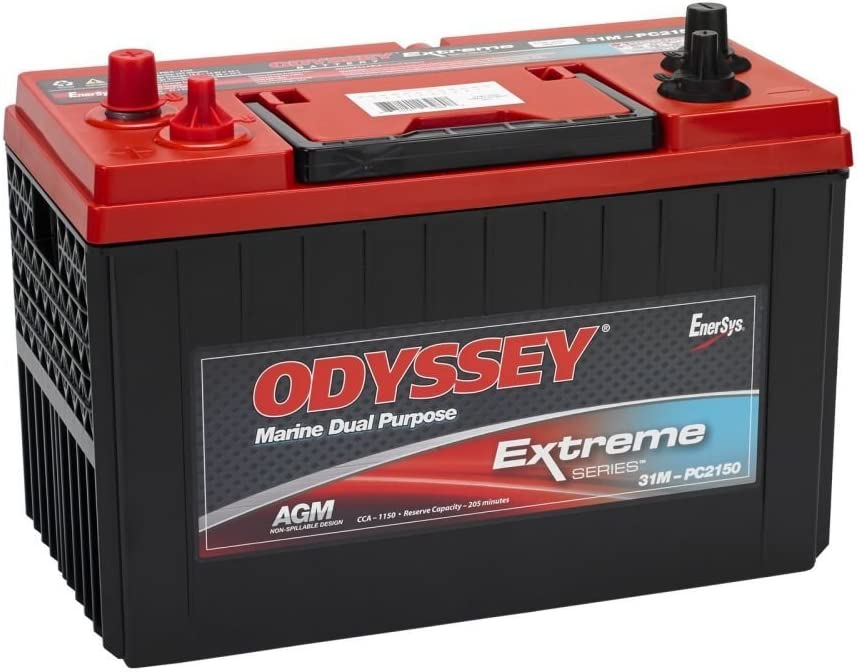
- Type: AGM / SLA (Absorbent Glass Mat, Sealed Lead Acid)
- Size & Weight: L 13″ x W 6.8″ x H 9.9″, 75.2 lbs
- Capacity: 103Ah (20hr nominal), 98 Ah (10hr nominal)
- CCA: 1150A
- Charging Current & Voltage: 25A, 14.4-14.8 V
- Expected lifespan: 8-10 years in float mode.
The Exide XMC-31 Megacycle AGM 200 is a dual purpose marine battery with both high capacity and high cranking power. This model comes with a slightly higher price tag, but it’s well worth it. The AGM engineering provides optimal gas recombination rate to avoid battery dry-out for superior performance. High cycling operation and even extreme vibration are no problems. Even the charge acceptance of this model is far greater than for a similar flooded or wet marine battery.
925 cold cranking camps, a reserve capacity of 200 minutes and 100Ah deep cycle use capacity with a high depth of discharge rate make this a very versatile marine battery. It retains power well and recharges quickly. In optimal conditions, you can expect roughly 3 to 4 hours of powering a mid-size trolling motor. At an average depth of discharge of 60%, you’ll get more than 1,000 cycles out of this battery. The XMC-31 AGM 200 marine battery comes with a 2-year replacement warranty and provides reliable service both for starting and powering a motor or onboard appliances.
How to Choose the Best Marine Battery – Buyers Guide
- Usage
- Types of Marine Batteries
- Cold Cranking Amps
- Capacity
- Reserve Capacity
- Dimensions & Weight
- Battery Boxes
- Care and Charging
- Conclusion
- FAQs
It’s important to know the purpose the marine battery will serve on your boat. Starter batteries are used to start a motor, and therefore deliver a large amount of cold cranking amps (CCA) or marine crank amps (MCA) to get the engine running. Deep cycle batteries are your onboard 12V power source for electrical appliances or an electric motor. Dual purpose models combine both modes and offer the best of both worlds, effectively allowing you to use only one type of marine battery.
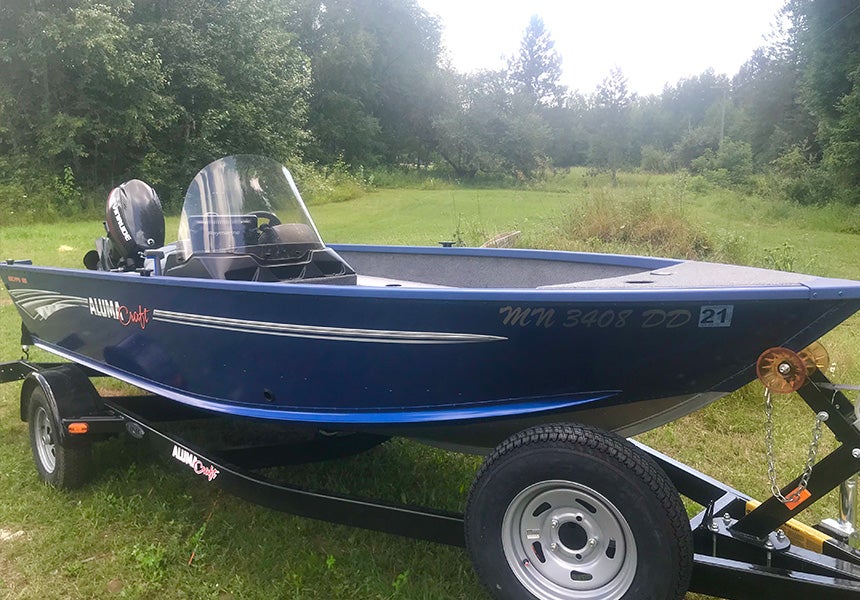
Usage
What’s the purpose of your marine battery? If you just need a power source to turn on the engine, then you’re looking for a starting battery. If you want to power onboard electronics and device, you’ll need a deep cycle battery. If you require both of these and don’t want to compromise on space and weight, consider a dual-purpose model that can serve both applications.
You also need to be aware of voltage requirements for your boat. A simple boat can have a battery for starting the motor, and running a fish finder, but if you add an electric trolling motor to the mix, you will likely need a second battery.
Some boats, especially bigger ones, or specific use type boats, like a bass boat, run the batteries in a series, take the 12-volt battery and adding another, or even a third to make the boat operate on a 24-volt, or 36-volt system. Know what you need and make sure the battery can handle being run in series if that is what your boat requires.
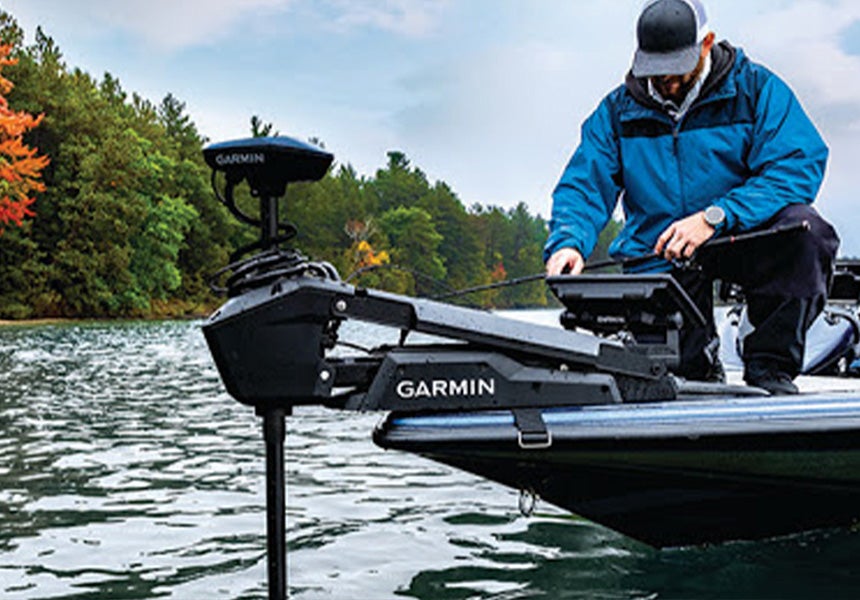
Cranking or Starting Marine Battery
Starting an engine requires a sudden burst of power, especially when cold. To achieve this, cranking batteries feature a distinct construction with more and thinner lead plates. Deeply discharging these could damage the plates.
Deep Cycle Marine Batteries
The main purpose of deep cycle batteries is a slower but steady discharge to supply power to electronics. They allow for great depth of discharge without damage, maintaining their capacity to be recharged fully. They can be used for starting an engine, but simply might not deliver enough cold cranking amps.
Dual Purpose
These hybrid models serve as both starters and steady power sources. Their main application is in situations where space is limited, or weight of batteries is an issue. Keep in mind that these have to compromise and can’t outperform a dedicated starter or deep cycle battery in their respective applications.
Types of Marine Batteries
All of the batteries on our list are Sealed Lead Acid (SLA) batteries. They’re valve-regulated and are also called dry, because they can’t spill and don’t leak. This is achieved using an Absorbent Glass Mat (AGM) to contain the battery acid, the electrolyte fluid. The released gases (hydrogen and oxygen) are nearly completely recombined within the battery, so there’s no venting. This type of battery has the advantage that it’s maintenance-free, and can be operated in nearly any mount position (except upside down). With the right charger, they’re also quick to recharge.
Flooded or wet batteries are not well suited for marine use, since they can spill or vent and pose a greater environmental risk, which is best avoided in marine use. They’re also much more susceptible to vibration and shock than AGM batteries, which is another disadvantage on the water.
Cold Cranking Amps
The starting power of a battery is rated in CCA, cold cranking amps. As we’ve mentioned, it’s the amount of amperage the battery can provide for 30 second maintaining at least 7.2V at a temperature of 0°F. With a rating of around 500 CCA, the battery can maintain up to 10V, whereas a value from 300 CCA on is the bare minimum needed to start an engine. Looking at the specifications of our selection above, you’ll see that the deep cycle only models just about service this minimum, whereas the starter batteries feature a much righter rating.
You will often see a value for MCA, also called Marine Cranking Amps. This takes into account that for a boat or watercraft, the temperature of 0°F hardly applies. MCA therefore specifies the amperage produced by the battery at 32°F, which will be higher than the CCA value. Look at what your engine requires for starting, then select a battery with a value that’s at least equal or greater.
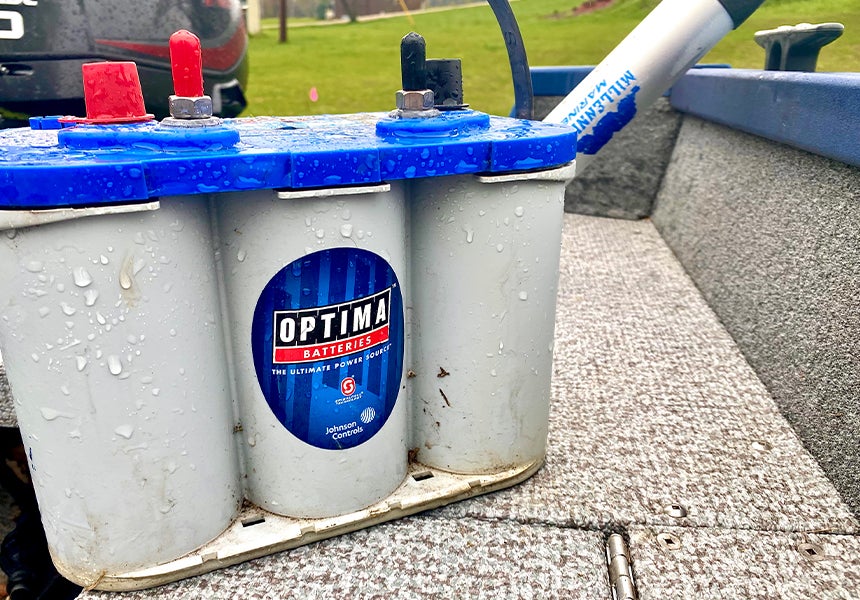
Capacity
Battery capacity is measured in Ampere hours, or Ah. A capacity of 100Ah means your battery can deliver that value for one hour, or 5A for 20 hours – or 20A for 5 hours. A higher capacity means you can run your appliances longer, which is important for deep cycle batteries. Keep in mind that typically you don’t fully discharge the battery to preserve its lifespan and only go to a value referred to as the depth of discharge. A typical DOD is around 60%. In regular use, you will only spend 40-50% of your deep cycle battery capacity, so plan accordingly and construct a power bank of several batteries if you have high power needs.
Reserve Capacity
The reserve capacity specifies the amount of minutes a battery can be discharged at a fixed rate of 10.5V by 25A at 80°F. A higher rating means your battery will last longer under load, of course. Keep in mind that this is a theoretical value and in real-life situations, you will probably draw less Amperage at a different temperature, resulting in longer battery life.
Dimensions & Weight
Size and weight can be an issue on a boat, and you surely won’t have unlimited space available for installing batteries. Bigger batteries come with higher capacities, but keep in mind you can wire several batteries together for more power. Portability is great if you need to move the battery, so keep that in mind for the off-season time as you might move the battery into storage.
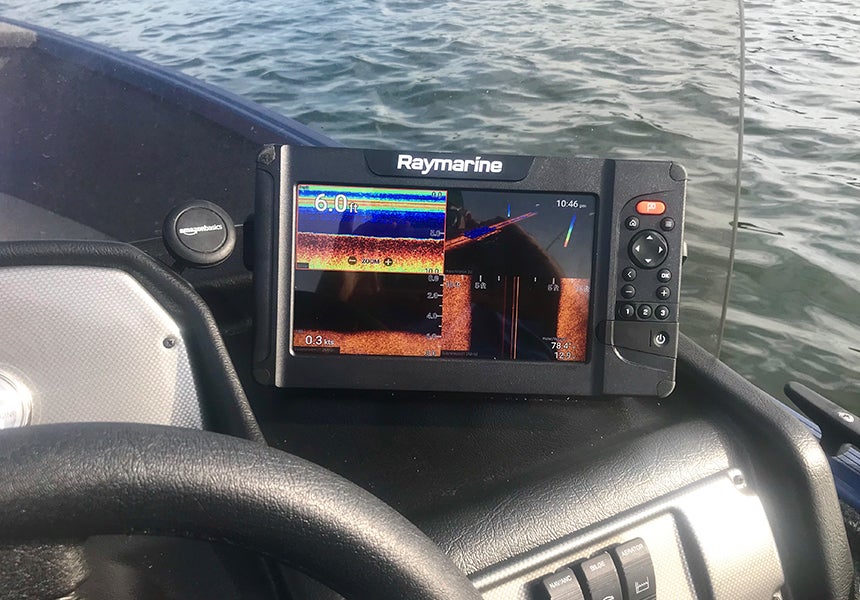
Battery Boxes
Marine batteries are, by necessity, exposed to some nasty conditions. Unfortunately, batteries don’t do well with temperature fluctuations, salt water or rain. Since most marine batteries are exposed to exactly these things, there must be a good way to protect them, right? If your boat doesn’t already have a protected battery compartment, you may need to buy a battery box. There are lots of them on the market but, before you go with the cheapest one, consider these ideas:
- Some battery boxes have USB charging ports
- Some battery boxes are more water resistant than others
- Some battery boxes display info like battery health
A basic battery box should keep out rain and splashing water. At the very least the box needs pass-through or external battery leads. On top of that, your battery box should be strapped or fastened down. If you regularly take your battery out consider a quick strap and external thumb-screw battery leads. This will minimize the number of steps it takes to remove the battery.
Care and Charging
Taking care of your battery is 90% of the battle to keeping it in service as long as possible. Batteries can be fickle, and if you don’t care for them properly, you’ll be sure to shorten their lifespan.
Here are a few things you can do to extend the life of your battery:
- Keep your battery on a trickle charger as often as possible
- Install a quick-charging port for a trickle charger for hard-to-reach batteries
- Consult the user’s manual that came with your battery and do everything it says to do
- Use dielectric grease to coat the terminals of your battery to prevent corrosion
- Avoid excessively cold or hot temperatures with your battery
One of the best things you can do for your battery is to keep it topped off. Use a trickle charger day-to-day to help with this. Another major threat to your battery life is extreme cold or heat. During the colder months of the year, store your battery attached to a trickle charger. When it starts to get hot out, keep your battery out of direct sunlight (battery boxes can help with this).
Conclusion
We hope that our review and guide will be helpful in selecting the right kind of marine battery for your boat or vessel. Examine your power needs on board, and how much space you have available for building a power bank to deliver current to your devices and appliances. Keeping things separate with a starter and deep cycle battery is a common installation, but if you have little room or lower power needs and want to save weight, a dual-purpose model could be your preferred choice.
Recent Updates
December 13, 2021: Verified availability of all products. Added new FAQs to address common consumer queries.
April 4, 2022: Added additional original photos, added to text to clarify some points to ensure you’re getting the best information.
FAQs
What type of battery do I need for my boat or vessel?
Marine batteries have two major applications: starting batteries which deliver power for starting the engine, and deep cycle batteries which power up devices and appliances onboard. These two uses have different needs, which is why there are distinct battery designs. Starter batteries serve the purpose of cracking and getting the engine running with a burst of Cold Cranking Amps (CCA). On the other hand, deep cycle batteries deliver power over a longer period of time and can be discharged far more.
What is the best marine battery to buy?
Our pick for the best marine battery is the VMAXTANKS AGM Marine Deep Cycle Battery. It boasts a high capacity, high-quality construction and can deliver a reliable performance.
How long do marine batteries last?
On average, marine batteries can last anywhere between 6 and 12 years. It’s important to keep yours fully charged as much as possible to prolong its lifespan.
Can a deep cycle battery start an engine?
In theory, yes, depending on the engine and the battery. Typically, deep cycle batteries deliver less cold cranking amps, but might still be sufficient to start an engine with their current. However, deep cycle marine batteries aren’t designed for this task, so you wouldn’t want to waste a good battery. If you have room for only one battery on your boat, you should get a hybrid or dual purpose model.
Do I need more than one battery?
If you want to power up appliances onboard, you require at least a starter battery and one deep cycle battery. According to your power needs, you can add more deep cycle batteries. Should you have limited room available on your boat, a dual purpose marine battery can serve you for both starting the engine and powering up devices.
How do I store marine batteries?
Different types of batteries require specific handling and storage, so make sure to always follow the manufacturer’s instructions. Batteries should generally not be exposed to water. Ideally, flooded batteries should be stored and operated upright. AGM and lithium batteries can also be installed at an angle or vertically (but not upside down). Vibration is an issue for all battery types, so try to minimize exposure to it for your marine batteries as it will shorten the lifespan. Never store the battery on bare ground, or on concrete, as this can damage the lifespan of the battery. And I strongly suggest a trickle charger to keep the battery at optimal levels.
Is there any battery maintenance required?
Flooded batteries require more maintenance and need to be properly ventilated. Regularly check all batteries for corrosion, and make sure they’re not exposed to or submerged in water. A trickle charger, like a battery tender, is the best thing you can buy for your battery.
